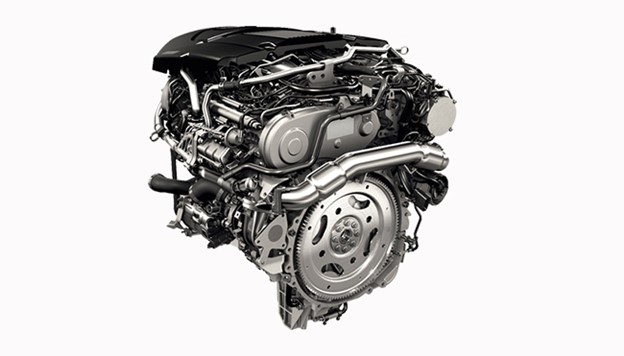The Top 5 Problems You’ll Face with a Range Rover 306DT Engine

The Range Rover 306DT engine is a widely recognized power unit. Known for its combination of luxury and rugged off-road capability, Range Rover vehicles have a loyal fan base. Since its introduction, the 306DT engine has powered several models, offering strong performance and durability. However, as with any engine, the 306DT has its own set of challenges.
This blog is necessary because Range Rover owners often face common problems with the 306DT engine. Understanding these issues can help drivers maintain their vehicles better and avoid costly repairs. Below, we’ll explore the top five problems that drivers often encounter with the Range Rover 306DT engine and how to address them.
1. Fuel Injection Pump Issues
The fuel injection pump is one of the key components that ensure fuel delivery to the engine. As time passes, problems start cropping up in this component, thus making the engine run inefficiently. In the Range Rover 306DT engine, the fuel injection pump suffers from wear, which compromises fuel supply to the engine. In other words, it can cause some serious problems in the engine if not corrected.
Common symptoms of faulty fuel injection pump
A symptom often of a fuel injection pump which is malfunctioning is that the engine will run terribly or will not start. It is also possible that the fuel efficiency is compromised, and in some cases, the engine even misfires. Another symptom is you get less power when you try to accelerate. In extreme cases, it might even stall or won’t start.
Solutions
Rarely can an en route fuel injection pump be serviced, making replacement of the pump usually the best option. That is a task to be left up to a professional mechanic. A way to altogether avoid such issues is to keep your fuel system and the fuel itself well-maintained. Start by using good-quality fuel and make sure that the cleaning process leaves your fuel system free of debris. A clean fuel filter will also minimize your risk of pump failure.
2. Head Gasket Failure
The head gasket is an essential component in the 306DT engine Range Rover. This component seals the junction of the engine block and the cylinder head. This way, oil and coolant will not mix with combustion gases. Head gasket failure is one major problem that will cause extreme damage to the engine if not detected as early as possible.
Causes and symptoms of head gasket failure
The popular causes of head gasket failure include Engine Overheating. The symptoms consist of white smoke at the exhaust, oil mixing with coolant, and engine overheating. You may also note other signs like loss of power or poor fuel efficiency and could visibly see leaks from your coolant at the bottom part of your automobile.
Cost of Repairs and Prevention Tips
Head gasket repair can be quite expensive because of the time-consuming labour involved. In some cases, it may be simpler and less expensive just to replace the engine. The head gasket can fail if the cooling system is not properly maintained. Cooling system service is easily serviced by checking coolant and ensuring the radiator is working correctly. Overheating indicates that problems are developing which can cause further damage.
3. Turbocharger Problems
The turbocharger in the Range Rover 306DT engine is meant to give more power and efficiency in return. However, turbochargers normally begin to malfunction in old age through wear and tear in case maintenance is not performed. Such problems with the turbo can amount to low engine performance and high repair costs if not diagnosed and repaired as soon as possible.
Turbocharger problems
A faulty turbocharger can make many noises. The most common sound is a whining or whistling during acceleration. It can also cause you to lose power or lag whenever you try to accelerate. The last common symptom is excessive smoke out of the pipe when you’re exhausted, which can mean oil leaks into the turbo system.
Further Maintenance Tips for Extending the Life
Regular oil changes ensure that the turbocharger has a long life. Since the turbo relies heavily on oil for lubrication, dirty or old oil can cause damage to the turbo components. Always avoid rapid acceleration when the engine is cold. This is another precaution against damaging the turbocharger. Always warm up the engine before driving it. Air filter checks and replacement of used ones also save debris particles from entering the turbo system.
4. Cooling System Problems
The cooling system controls the temperature of the engine in the Range Rover 306DT. Its malfunction often leads to overheating, which is disastrous for an engine. Neglecting the condition may lead to severe damage and even cost a fortune to repair.
Overheating and other problems with the cooling system
The most common condition present in the cooling system is overheating. This can either rise rapidly on the temperature gauge or provide steam coming from under the hood, and even a coolant warning light across the dashboard. These can be due to leaks within the cooling system, a faulty radiator, or a broken water pump.
How to Prevent and Deal with Cooling System Issues
Regular checks on the coolant levels and no leaks would prevent cooling system problems. At least once in every session, the cooling system might have to be flushed out to clean up debris that may cause a blockage in it. Overheating signs usually mean stopping driving, letting the engine cool, and inspecting it. Another way of keeping the cooling system in check is by replacing faulty components such as the thermostat or water pump.
5. Electrical Problems
The most common Range Rover 306DT issues include electrical problems. Such problems may be as minute as the smallest glitch on the dashboard to huge troubles with the engine’s start-up system. Electrical malfunctions are part of those frustrating and mysterious problems that would not easily reveal themselves without genuine diagnostic equipment.
Common electrical faults in Range Rover 306DT
The most frequent electrical faults are actually the failing of either the batteries or alternators, which renders a car unable to turn over when starting. The lights in the dashboard can even go haywire, the sensors, and even the ECU in your car. At times, an electrical fault can create short circuits throughout several systems and make the performance of the vehicle unreliable.
Troubleshooting tips and solutions
Now, you need to start with something simple; that is, checking the battery for any fault and ensuring that the wires are properly attached. If both the battery and the alternator are in good shape, a scan may be required to identify what could be responsible for the fault. Replacing the sensor or rectifying the faulty wiring may solve most electrical issues. For complicated electrical faults, a visit to a professional is very inevitable to ensure proper rectification.

